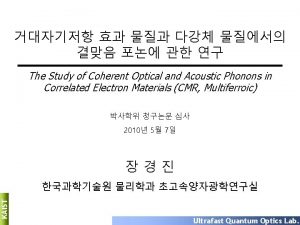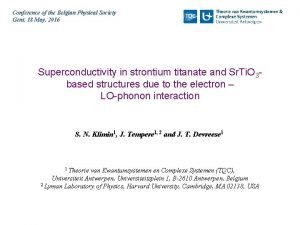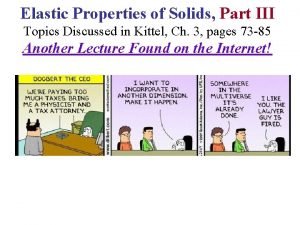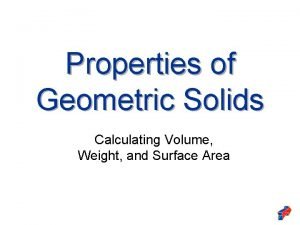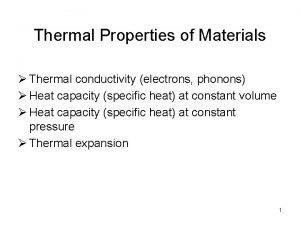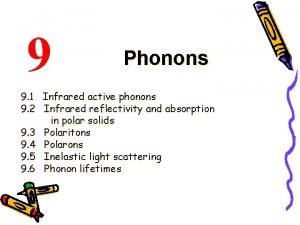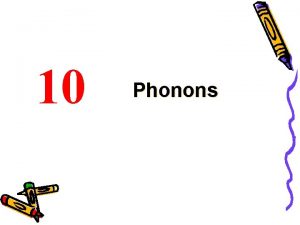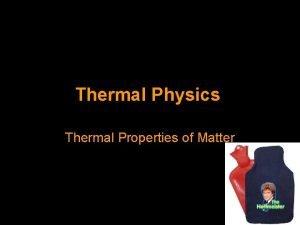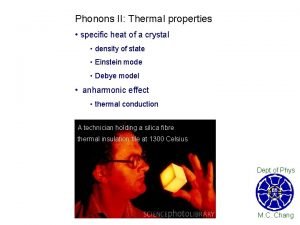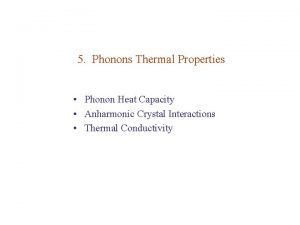Thermal properties of Solids phonons a m w







- Slides: 7

Thermal properties of Solids: phonons a m w p/a 0 p/a k n-1 n n+1

Brillouin zone k 1 w p/a k 2 0 p/a k Displacement of lattice point k 2 k 1 First Brillouin zone is range of wave vectors k: -p/a£ k £ p/a

Longitudinal vibration of a linear chain of two masses M m 2 n-1 2 n a/2 M m 2 n+1 2 n+2 a/2

Vibration of a linear chain of two masses w w 3 ti op l ca w 2 ac ou st ic w 1 -2 p/a 0 2 p/a k 1 st critical frequency: heavy masses only moving, light masses at nodes 2 st critical frequency: light masses only moving, heavy masses at nodes 3 st critical frequency: light and heavy masses are moving in opposite directions

Quantized lattice vibrations Quantized model of the crystal vibrations: there is set of 3 N independent linear oscillators( modes) with energy E=(n(w)+1/2) hw The mean number of phonons in the mode with w is Debye’s frequency w. D : the largest frequency of vibration in crystal assuming linear dispersion: w = v k. Debye’s temperature Q= hw. D/k. B 13 Typical acoustic phonon frequency is ~10 Hz, optical phonon frequency 14 ~ 10 Hz, Deby’s temperature: diamond -3000 K, Cu -320 K, Pb -90 K

Inelastic neutron scattering Neutrons can be scattered from the crystal away from Bragg’s law when absorbs or emits phonon:

Infrared absorption in ionic crystals 14 Transmitted light in infrared range, w~ 10 Hz (l~40 -100 mm) are absorbed by ionic crystals with optical mode of phonons Transmittance through thin film (0. 17 mm) of Na. Cl Na Cl Ions of Cl and Na are moving in opposite directions Transmittance Cl 100% 50 60 70 l(mm)
